Gumbo 101: Everything You Want to Know about Gumbo
Ever wanted to learn how to make gumbo at home? This gumbo guide is the ultimate resource for everything you need to know about making the classic dish. Come learn tips and tricks for making, storing and sharing gumbo, plus check out 5+ unique gumbo recipes from different regions!
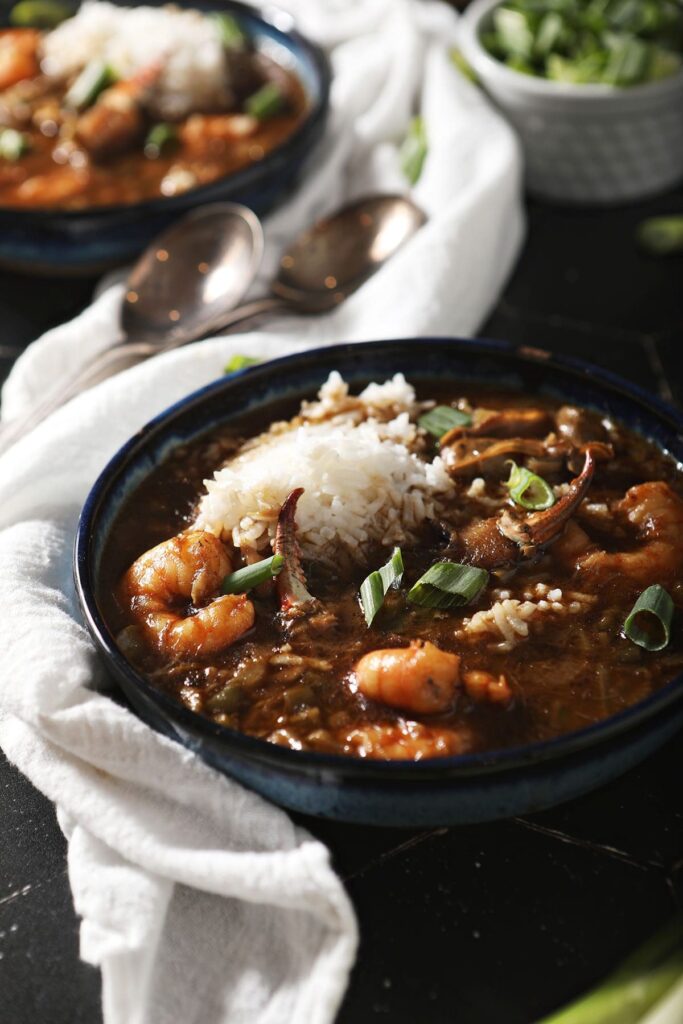
This post contains affiliate links.
If you’re curious to learn about gumbo, you’re in the right place.
This is one of my favorite dishes to make during the winter months. This hearty dish is comforting and unbelievably delicious.
And yes, it is a total labor of love, which is why we make a big ‘ol batch whenever we make it, but it is worth the time spent.
So… what IS gumbo?
Gumbo is a thick stew that is traditionally filled with meat and vegetables, like onion, green bell pepper and celery.
Some gumbos call for chicken and andouille sausage; others, seafood. Others call for no meat at all. (This New Orleans Vegan Gumbo with Okra looks and sounds aaaaaamazing.)
The traditional way to make it is on the stovetop, but you can also make it in the slow cooker or even the Instant Pot.
Gumbo is a well-known and beloved dish in Louisiana — it’s actually the state dish! — but it’s not native to Louisiana.
Many food historians speculate that gumbo was brought to our country by enslaved people from West Africa. The word gumbo is a West African word that means okra, which has led to conversation about the first gumbos calling for okra.
I’ve also read that there’s a word in Native Choctaw similar to gumbo that means filé, which are the dried, ground sassafras leaves that were originally used as a thickener and are used as garnish these days.
If you want to take a deeper dive on this, Stanley Dry’s A Short History of Gumbo from the Southern Foodways Alliance is a fantastic read. So is The Real Story of Gumbo, Okra, and Filé from Serious Eats.
Some notes on variations:
Today, different regions of the country have their own styles of gumbos, which have evolved to capture readily available ingredients from those regions.
This is why you’ll see gumbos ranging from an okra thickened gumbo and tomato-filled Gullah gumbo to a seafood and tomato Creole one to a greens-filled gumbo z’herbes.
The variations are endless and are oftentimes dependent on what you were raised with. (After all, they say the best gumbo is your grandma’s gumbo.)
The gumbo recipes on my site are Cajun gumbos, which get their flavor from a dark roux, the “Cajun trinity” of vegetables and the proteins of choice.
This article from the New York Times details lots of different ways gumbo is being made in New Orleans and is worth a read!
What does gumbo taste like?
That depends on what’s in it. But to me, gumbo is a big, comforting bowl of goodness. It’s like a warm hug.
It’s heavier than a traditional soup, but it’s toasty and warm. (We have the dark Cajun roux to thank for this toastiness.)
It’s not too thick, but it is rich.
Gumbo tastes a lot like the proteins that you add to it, as well as the aromatic veggies and the dark roux. However, some gumbos don’t call for a roux and will get their flavor from okra, tomatoes, file and more ingredients.
Served with steamed rice or potato salad, it makes the perfect meal for a chilly day.
So now that we know what gumbo is… what is it not?
Gumbo vs Jambalaya
While they have similar ingredients, these two dishes are quite different.
Jambalaya is a rice dish while gumbo is a hearty stew that’s served over rice.
A jambalaya should not be saucy and should instead have all the ingredients cook with the rice.
Etouffee vs gumbo
An etouffee is a thicker sauce served over rice that typically features shrimp or crawfish. (Our Crawfish Etouffee recipe is one of our kids’ favorites.)
While it can use similar ingredients to a gumbo, it’s thickened with a blonde roux and uses significantly less liquid.
Similar to a gumbo, it’s served over rice.

Gumbo ingredients and tools
The Speckled Palate participates in affiliate programs. As an Amazon Associate, I earn a commission from qualifying purchases. Please refer to my disclosure page for more information about these affiliate programs.
- A large stockpot or Dutch oven
- Sharp knife and cutting board
- Liquid measuring cup
- Wooden spoon
- Rice cooker (or a saucepan with a lid) to cook your rice in
What are the most common ingredients in gumbo?
Here are the veggies you’ll typically find in a gumbo:
- Green bell pepper
- Onions
- Celery
- Garlic
These are sometimes known as the trinity or the “holy trinity.”
Some other ingredients you might need to make a gumbo include:
- Unflavored oil — to sauté our veggies in! While this isn’t a necessary step, we like how it adds a little extra flavor.
- Liquids — we like to use a combination of water and stock or broth, depending on what protein you use in your recipe.
- Seasonings — Salt-Free Creole Seasoning, salt and pepper are commonly used in gumbos. We like to use a salt-free seasoning because most Creole and Cajun seasonings are super salty. They both feature herbs and spices, like cayenne pepper and black pepper. They’re very similar, so you can use Cajun seasoning in this recipe in place of the Creole seasoning.
- Dark roux (if you don’t plan on making your own) or roux ingredients — which include equal parts fat and all-purpose flour. This is a traditional French ingredient (which is used as a thickening agent) that has been taken by the Louisianans and transformed into a major flavor component for gumbo. We make ours with unflavored oil and flour, but you can use a different type of fat, like unsalted butter or even duck fat or beef tallow.
- Proteins — depending on the type of gumbo you’re making, this could include shrimp, crab, oysters, chicken breasts, chicken thighs, sausage, duck or more. I recommend purchasing the highest quality proteins you can get your hands on, especially if you’re making a seafood gumbo.
- White rice or brown rice, for serving.
- Garnishes — green onions, fresh parsley and gumbo file, which are ground up sassafras leaves. It’s sometimes called filé powder. Sprinkle these on top of your bowl of gumbo for extra flavor. Some people add a dash of hot sauce, too, or a sprinkle of cayenne.
Please note that Cajun gumbo recipes do not feature tomatoes, but Creole gumbo does. People have Opinions about this.

How to make a Gumbo
Please note that this is dependent on the recipe you’re cooking from, but generally, here is the order you’ll do things to make a gumbo.
Make the roux. If you’re making a Cajun gumbo recipe (like all the ones on my site), it needs to be dark brown. Some call it a chocolate brown roux. I have a tutorial on how to make roux for gumbo if you need assistance.
Chop all the veggies.
Sear the meats (if not using seafood.)
Bring all the liquid to a boil, and add the roux, boiling until it begins to thicken.
Add the veggies, and cook down.
Add the meat, and let the the ingredients simmer for a while. (Again, this step looks different if you’re using seafood, which will overcook if you boil it for too long. Please read your recipe carefully.)
Serve your gumbo over rice with chopped parsley, green onions and file powder, and enjoy!
Gumbo safety and storage tips
Let the leftover gumbo cool before transferring to an airtight container. Store gumbo in the fridge for 4-5 days.
Reheat on the stovetop in small batches or in a microwave-safe bowl in the microwave in 30-second bursts until warmed through.
Can I freeze a gumbo?
YES! Gumbo freezes really well. And what better way to save some of your big batch of gumbo for later than freezing it? It’s a great way to savor the hard work that went into the dish.
Once the gumbo has cooled, transfer it to an airtight storage container that is freezer safe. Leave a little room at the top of the container so that the liquid can expand as it freezes. Freeze until solid. It’ll keep for 2-3 months in the freezer.
Here are some more things to think about while freezing gumbo:
- Change up the size of your storage container. Freeze smaller portions in 16 oz. freezer containers.
- You can freeze gumbo in individual portions (or your favorite
appropriate portion sizes) in a tool like SouperCubes* (affiliate link). - Use a plastic bag (or a specialty plastic freezer bag)
as your storage container. Place the bag lying flat on a baking sheet to flash freeze it before removing the sheet pan and stacking the bags of gumbo.
Defrost the frozen gumbo in the fridge, then warm through in a saucepan over low heat or in the microwave.

Erin’s Easy Entertaining Tips
We’ve been making homemade gumbo for years for our annual New Year’s Day party, and I have a few tips and tricks to making the hosting and entertaining easier on yourself…
Here are a few of ‘em:
- Make your gumbo a day in advance… but leave out the seafood until the day of. Gumbo takes some time to set up and get going, but it takes time for the flavors to meld together. Put it together the day before your party, and store it in the fridge. Skim any excess fat from the top before reheating the morning of your party.
- Have the fixings to serve it with! Rice is a must, and so is gumbo file* (affiliate link)! Some folks enjoy potato salad with gumbo, while others add hardboiled eggs.
- Double the recipe for a crowd or half it for a smaller gathering. When halving our gumbo recipes
, we always err on the side of more protein and round up to the nearest pound if necessary.
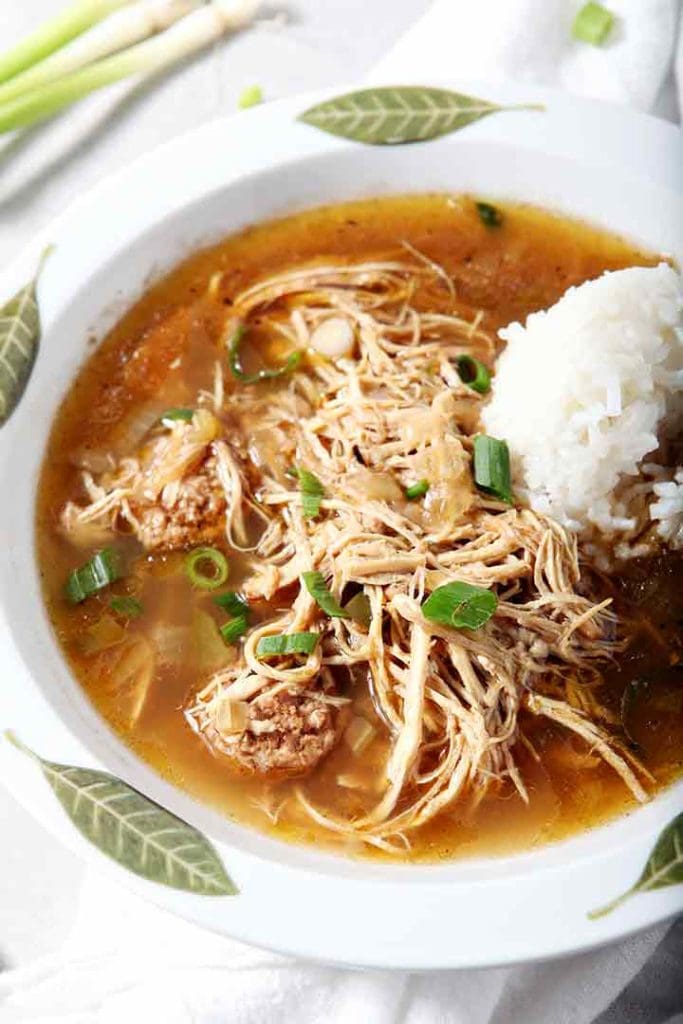
Frequently Asked Questions
That depends on what traditional gumbo you’re talking about and where it’s from. Cajun gumbos start with a dark roux.
It is a labor of love. Gumbo is a combination of ingredients, prep time and the time spent simmering on the stovetop. While it’s not particularly complicated, it is time-consuming. This element, paired with the fact that it is so easy to share with the people you love, makes it special to me.
It’s both! The ingredients are a little different between Creole and Cajun gumbos, but they have many similarities and are both delicious.
No. Jambalaya is a completely different dish than gumbo. (Please check out my Chicken and Sausage Jambalaya recipe, as well as this Turkey Sausage Jambalaya. The photos can tell you the difference, too.) It is a rice-based dish while gumbo is more of a stew served over rice.
No, it is not.
Honestly, the roux adds such beautiful flavor to gumbo that it’s really important to do it right (or find one that’s been pre-made for you.)
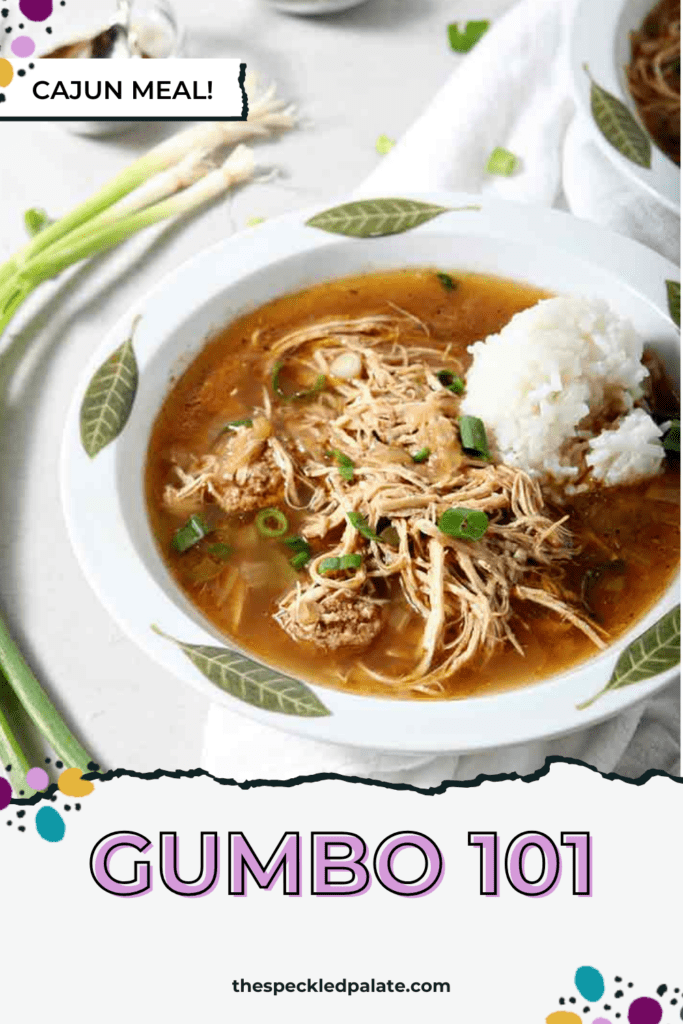
Quick tips and tricks for the best Gumbo
- Mise en place is key. Prep and chop everything before you start putting your gumbo together.
- Share it! Most gumbo recipes tend to make big batches, so invite friends or family over for dinner.
- How to store: Store leftovers in an airtight food storage container for 3-4 days. Reheat in the microwave in 30-second bursts until warmed through.
Our favorite gumbo recipes:
Chicken and Sausage Gumbo
Chicken and Sausage Gumbo is the ultimate Louisiana comfort food! This gumbo starts with a dark roux as its base. Once the roux is ready and combined with water, add sautéed chopped green bell pepper, onion and celery to the pot. Sear the chicken and sausage, too, before throwing them in, and letting the gumbo cook low and slow for hours. From-scratch gumbo is a labor of love, but it’s a delicious one that is perfect to serve to a crowd over rice.
Instant Pot Gumbo
Whip up easy and flavorful Instant Pot Gumbo to share with friends and family this season! Full of flavor, this twist on the classic Louisiana chicken and sausage entree is made easy using an electric pressure cooker and a Louisiana secret: jarred dark roux.
Seafood Gumbo
Classic Cajun Seafood Gumbo is intensely rich, yet delicate, and perfect for a chilly day. Chock full of shrimp, crab and oysters, this gumbo recipe sings with flavors from the sea. It makes a big batch, too, so you can share it or freeze it for later.
More gumbo recipes to try:
- Gumbo Z’herbes (Green Gumbo)
- Chicken, Shrimp and Okra Gumbo
- Gumbo with Andouille Sausage, Chicken, and Seafood
Which recipe do you want to try first?

About the Author:
Erin Parker is a Southern gal living in Texas with her husband and two daughters. She started The Speckled Palate to share what she was cooking as a newlywed… and over the years, it’s evolved to capture her love for hosting. Specifically, the EASIEST, lowest key entertaining because everyone deserves to see their people and connect over good food. Learn more about her…

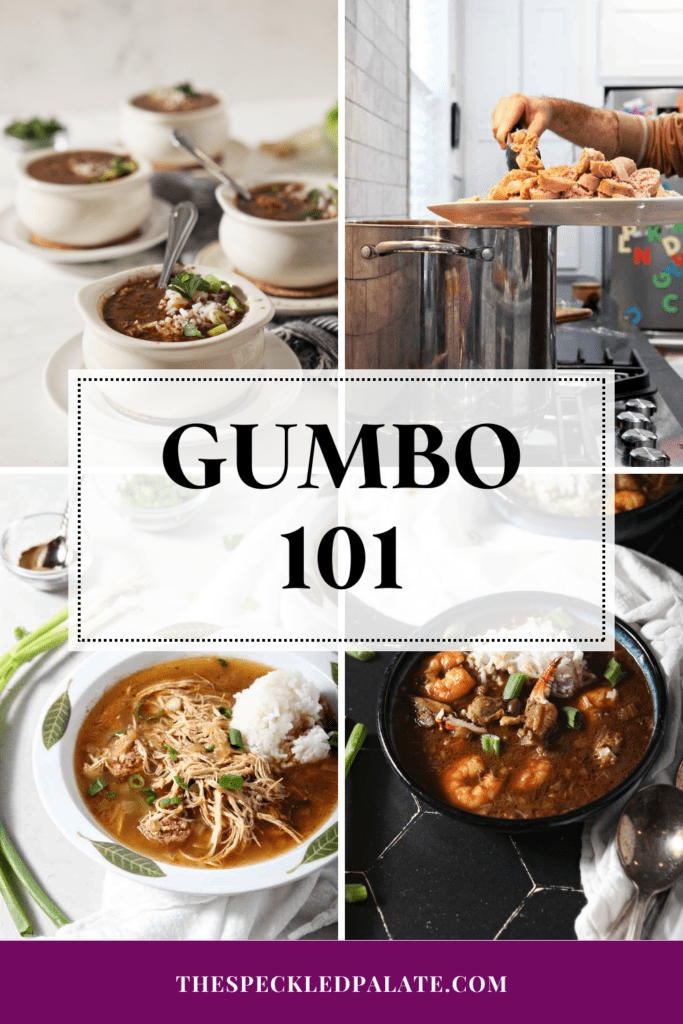
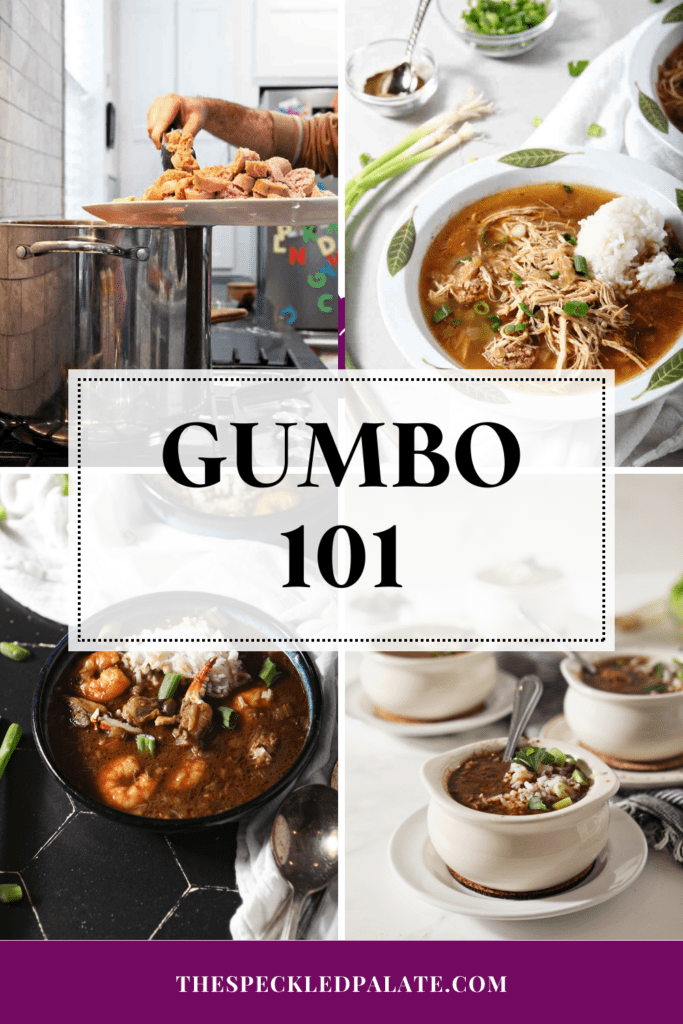


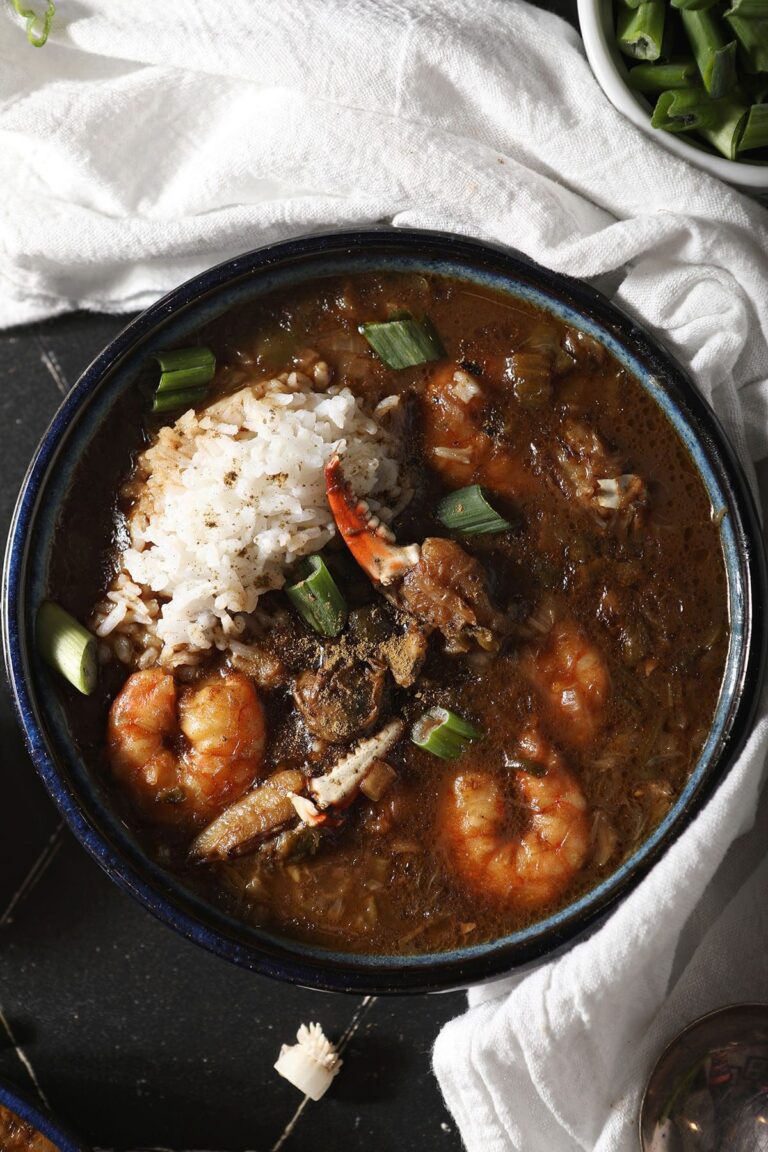

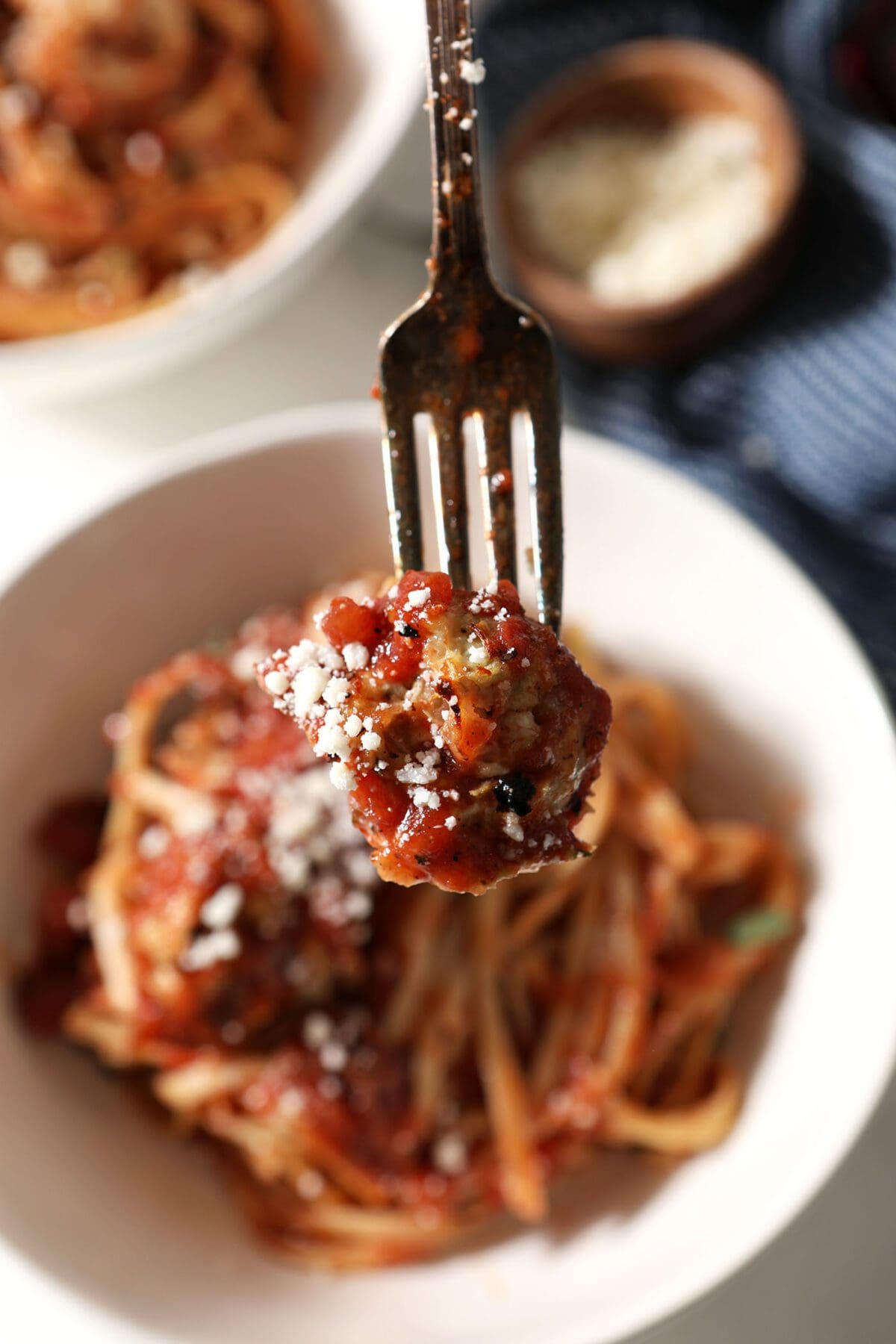


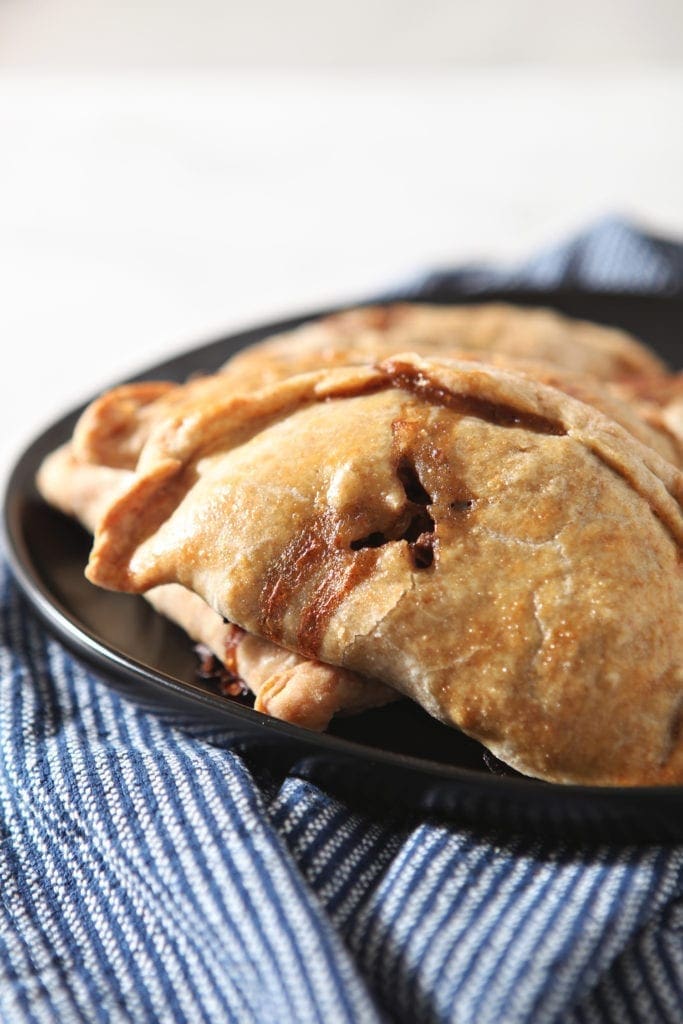

Before leaving a comment or rating, ask yourself: